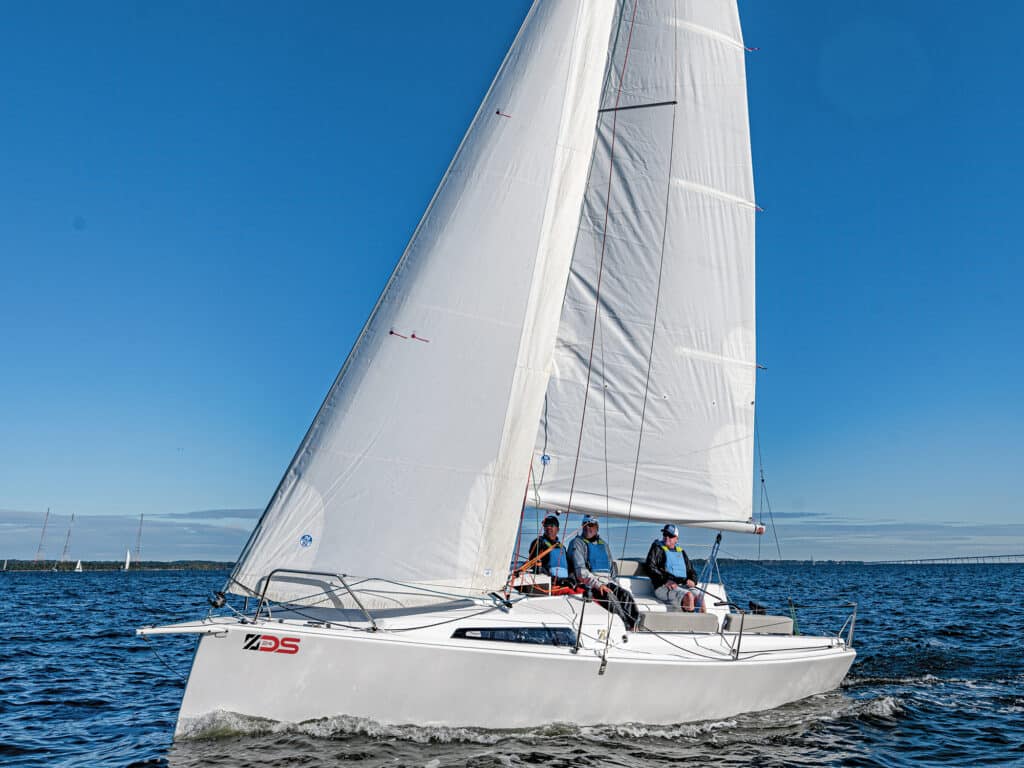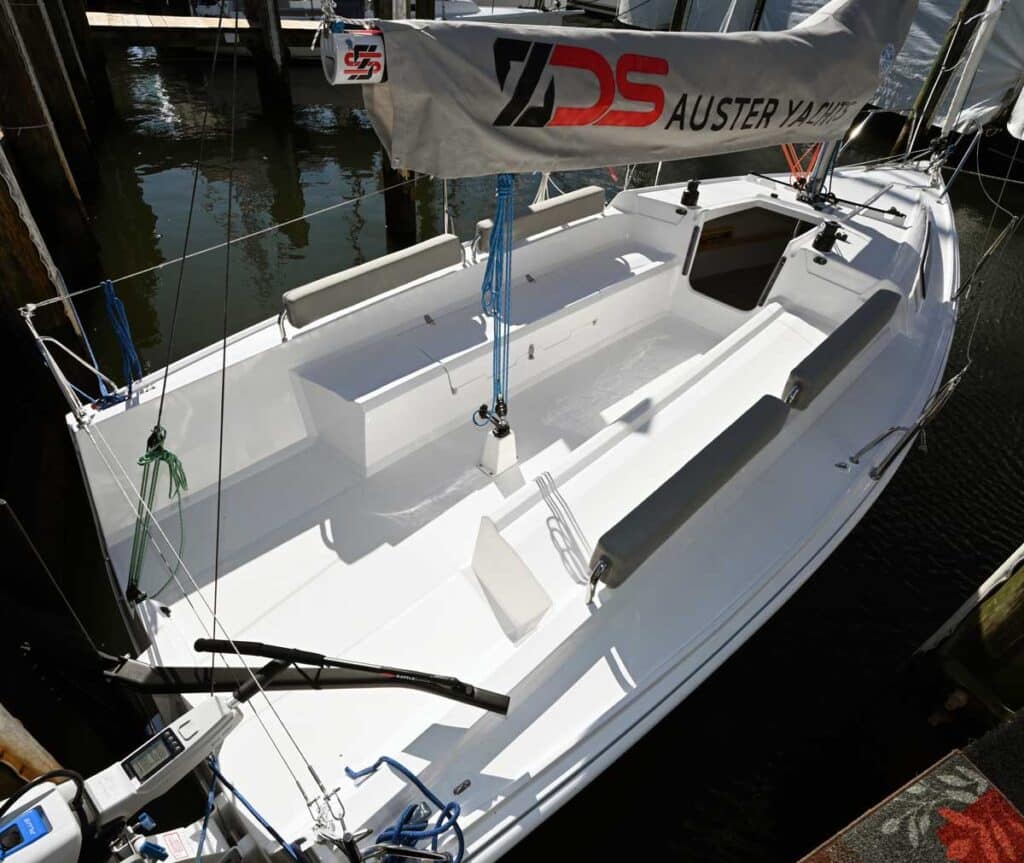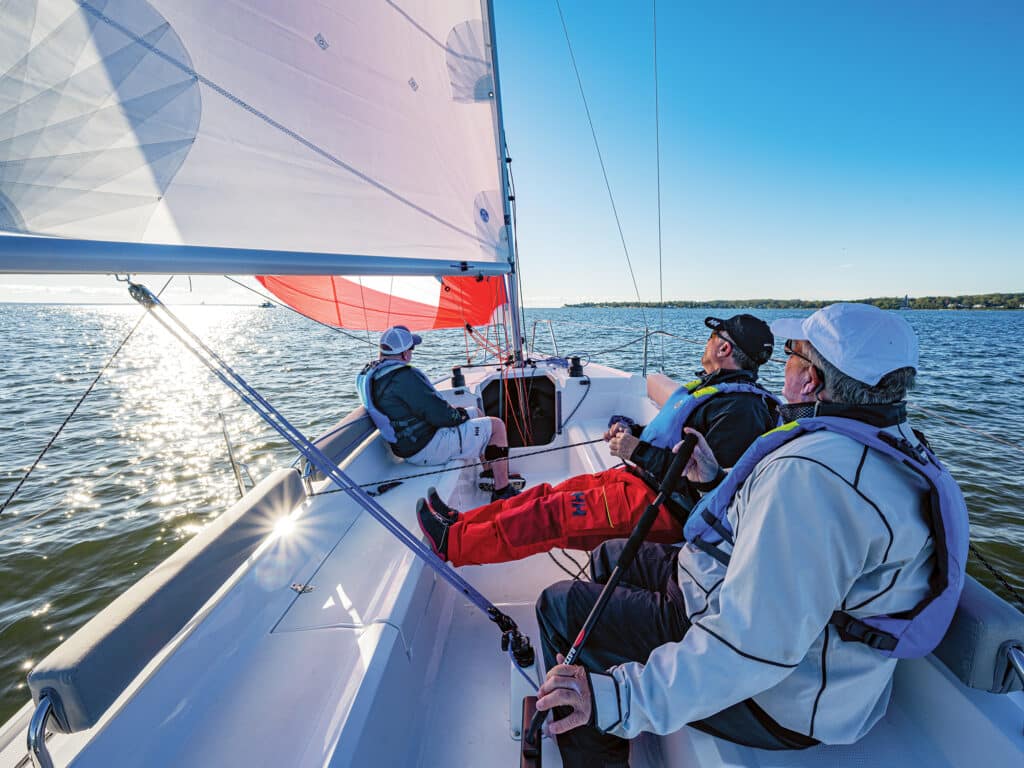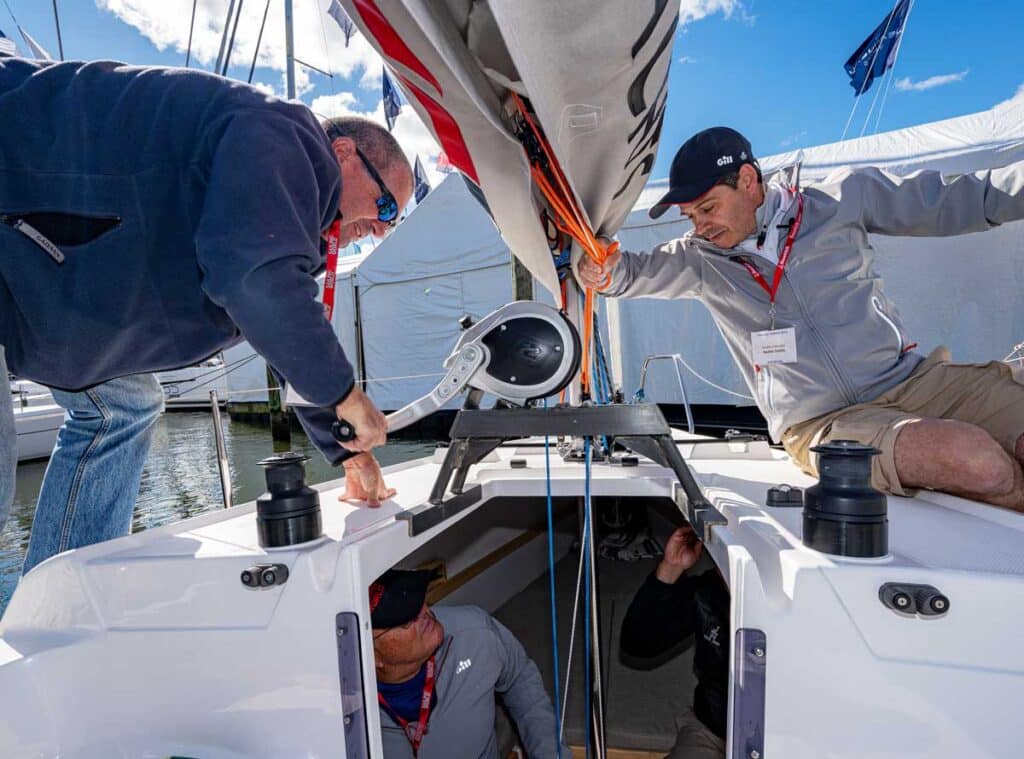
There’s always one unknown with the Boat of the Year, and this year’s surprise entry was the Z24, a model from an Argentinian builder no one on the team had ever seen or heard of before. But there it sat at the US Sailboat Show in Annapolis, an eye-catching design that proved to be as exciting to sail as it was impressive at the dock.
The Z24 is an evolution of a line of keelboats designed for the shallow waters of the Rio de La Plata, simple boats ideal for the area’s sailing schools and local races. The schools want long bench seating and the removable padded backrests, and private owners want basic amenities like the sink, the quarter berth and the portable toilet. The racers, of course, want an asymmetric spinnaker package and a taller rig, and what the judges experienced is a utilitarian sportboat that could very well be an offspring of a J/24 and Melges 24. “I was really impressed with how it sailed both upwind and downwind,” Greg Stewart says. “It’s all simple because there’s not a lot of extra parts or lines on it. It would be a great little beer-can racer.”
For its test sail, in a 10- to 15-knot breeze and flat water, the three judges sailed upwind and downwind without ever leaving the comfort of the cockpit. “With all of us sitting legs-in and comfortable with the backrests, it wasn’t tippy and tracked really well,” Stewart says. “The rudder, which is plenty long and nicely shaped, had a great feel. I tried to force it to spin, but it wouldn’t. It’s well-balanced.”
At less than 3,000 pounds all up, the boat was light and responsive, Stewart adds, and 1,100 pounds of ballast in the 4-foot-7-inch lifting bulb keel provided plenty of stability. At the dock, the boat’s builder, Andres Mendez, demonstrated the efficiency of the winch system that nests over the companionway and lifts the keel flush to the hull in a matter of minutes. The carbon-skinned rudder is even easier, held captive in its casing with two quick-release skewers.

To ensure the integrity of the keel-box structure, the boat is built (in hand-laid polyester with PVC honeycomb coring in the deck only) in split halves and joined at the center seam with the keel box molded in place. “It’s not glued, and it’s not a secondary bond,” Mendez says. “Everything is laminated together, so it’s solid glass down the entire center seam—very strong and very stiff.”
Beneath the port cockpit bench seat is a deep locker to stow an outboard (electric), fenders, sails and accessories, and under the starboard bench is the full-length quarter-berth. The boat as tested had a mainsheet swivel mounted on a single floor post, which sailing schools prefer, but the cockpit design can accommodate a midship traveler that spans between the cockpit walls, or a floor-mounted traveler aft of the benches. The judges say the 8-to-1 backstay purchase was robust enough to effectively manipulate the rig. At the forward end of the cockpit are only two cabin-top winches and cam cleats. On the foredeck is a radiused self-tacking jib track and shallow anchor locker. The judges noted the molded nonskid pattern is excellent.

The Z24’s superb sailing attributes aside, what appealed to all the judges was its simplicity, inside and out. “It’s all very low-maintenance,” Stewart says. “It’s definitely a hose off and walk away kind of boat, and my impression is that they spent a lot of time developing it and thinking about it to get it right, and that allowed them to keep it simple. The quality is great inside and out. Right away, when we got on it, I could see the gelcoat was really nice, and it had a sleek low-cabin profile that looked great. I could definitely recommend this boat to somebody looking for a well-priced daysailer that would be really easy to own.”

In 10 to 15 knots of wind, judge Mike Ingham was impressed with the responsiveness of the helm and the overall balance of the sail plan, a proportional mainsail, and small non-overlapping, self-tacking jib. The boat can accommodate larger jibs, Mendez tells the judges, with the installation of cabin-top tracks and a floating inhauler system. With the asymmetric spinnaker on furler and tacked to the prod, it was easy for the judges to deploy it, jibe it and roll it away without ever having to step foot on the foredeck.
“It had that recreational sportboat feel,” Ingham says. “It’s not going to jump up on plane instantly, but it’s plenty quick. They got some things right, geometrically, with the keel and rudder that make it a real pleasure to sail. It’s nicely balanced and tracked really well upwind. I was never fighting the helm. Downwind, it was plenty lively, and when a puff hit, it was just a slight bear away and it would accelerate immediately. As a recreational race boat and family daysailer, I think they nailed it.”









